
With recent splits in formerly familiar species (such as Arctic Warbler) and proposed splits in others (including Blue-and-White Flycatcher), several new species have been recognised and their new names adopted by Gill & Donsker (2012). These accepted splits (and lumps) will be included in the next Birds Korea Checklist Update (expected to replace Moores & Park 2009 in early 2013). One of the newly recognised species is Stejneger’s Stonechat Saxicola stejnegeri, recently split from Siberian Stonechat Saxicola maurus.
Stejneger’s Stonechat has a wide distribution in Far East Asia, and is the common and presumably only regularly-occurring stonechat in the Republic of Korea. It is most numerous here during northward (March-May) and southward (August-November) migration, with a small and apparently declining number also breeding in suitable habitat and a very few mid-winter records. There are, by contrast, no proven Korean records of Siberian Stonechat.
This recent split of the former Common Stonechat Saxicola torquata into several species (including European Stonechat Saxicola rubicola, Siberian Stonechat and now Stejneger’s Stonechat) leaves several taxonomic questions unresolved, and also increases the identification challenge. For example, while there is a clear genetic distance between maurus and stejnegeri, the status of subspecies przewalskii apparently remains unknown. On present knowledge (or rather lack of knowledge!) it could belong either to Siberian Stonechat or to Stejenger’s Stonechat. Przewalskii is the taxon said by Brazil (2009) to winter “as far east as E. China”. As such it seems likely to occur at least occasionally in the ROK, perhaps most especially in late autumn (when seasonally frequent westerly winds might cause migrants heading east to the Chinese coast to drift across the Yellow Sea).
However, Brazil (2009) does not provide any clues as to how to identify this subspecies. Moreover, the separation of even a Stejneger’s Stonechat from nominate Siberian Stonechat in the UK (at Portland Bill in October 2012) while suspected in the field, could only be confirmed by mtDNA testing. This is because there is much individual variation and there are few, if any, diagnostic plumage differences between Siberian and Stejneger’s Stonechat – even in the hand! The main structural difference between these two species (the width of the bill at the proximal edge of the nostrils) is also sometimes hard to apply. Although most Stejneger’s have a broader bill-base (range of 4.7-5.7mm) than Siberian Stonechat (range of 4.2-4.9 mm, with a mean of 4.55mm), a few narrow-billed Stejneger’s will overlap in this measurement with broad-billed Siberian (Svensson 1992). The same author does not provide measurements for przewalskii. Other supporting criteria to identify a potential Siberian Stonechat in Korea in autumn might include: slightly darker wing and tail feathers in First Calendar Years and less extensive moult of wing-coverts (Svensson 1992); and less richly-saturated plumage than Stejneger’s, perhaps stronger evidence of a pale supercilium, and perhaps more obvious white in the rump (from various online sources).
The following digiscope images are all copyright of Nial Moores / Birds Korea. Most are from Gageo Island in late October and early November this year and all but Figs. 11 and 12 are considered to look like “typical” Stejneger’s Stonechats (at least this is how most seem to look in Korea!). Informed comments to improve the identification, sexing and ageing of these stonechats would be most warmly appreciated!


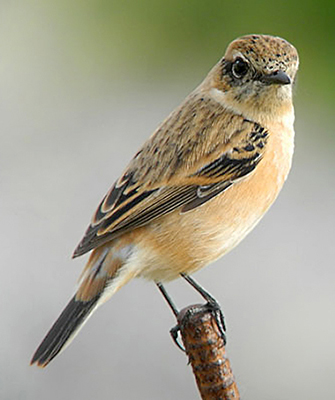


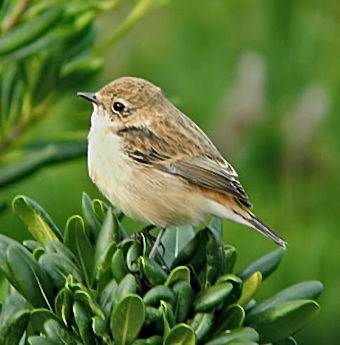






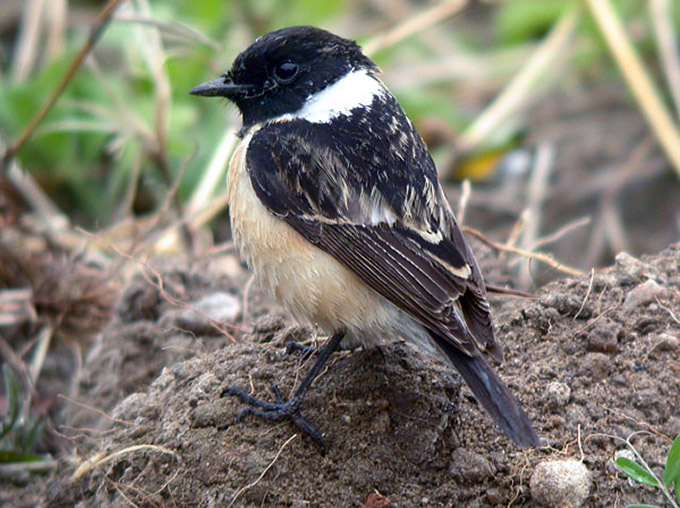
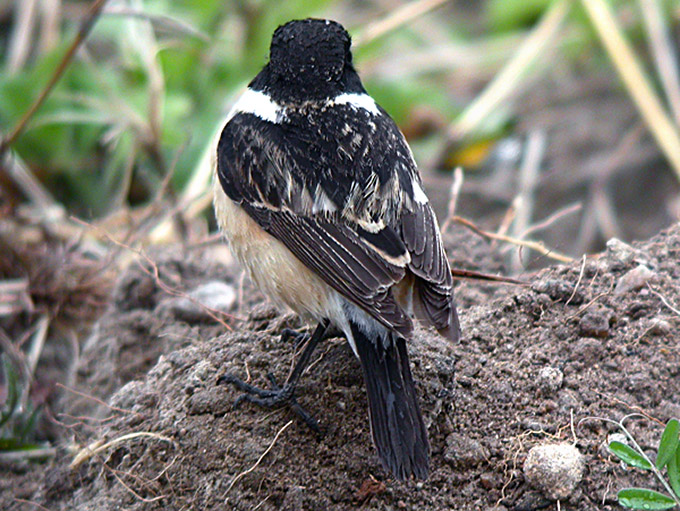
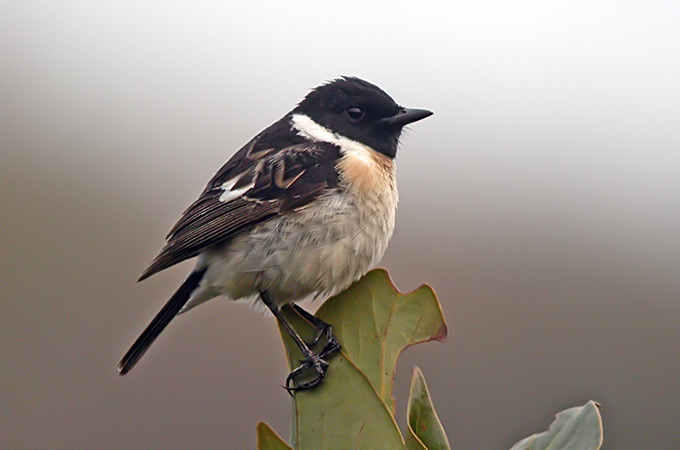

Again, we would welcome receiving comments – and would be most interested in seeing images of other taxa for comparison.
References
- Brazil, M. 2009. Birds of East Asia. Helm Field Guides
- Gill, F & D Donsker (Eds). 2012. IOC World Bird Names (v 3.2). Available at http://www.worldbirdnames.org/n-chats.html
- Moores, N., Park J-G. 2009. The Birds Korea Checklist: 2009. Published online in August 2009; accessed in Nov. 2012 at: http://www.birdskorea.org/Birds/Checklist/BK-CL-Checklist-Aug-2009.shtml
- Svensson, L. 1992. Identification Guide to European Passerines. Published and sold by the author.
For more online discussion and images (all accessed in November 2012) also see:
- Birds Korea Gallery http://www.birdskorea.org/Gallery/Species/BK-GA-Saxicola-maurus.shtml
- Oriental Bird Club Image Database (including 132 images of various taxa, though most from presumed wintering ranges): http://orientalbirdimages.org/search.php?keyword=siberian+stonechat
- Birding Frontiers:
http://birdingfrontiers.com/2012/10/17/siberian-stonechat-age-and-race/
http://birdingfrontiers.com/2012/11/05/stejnegers-stonechat-in-the-netherlands/ - Bird Forum (Discussion on taxonomy etc): http://www.birdforum.net/showthread.php?p=2581060



